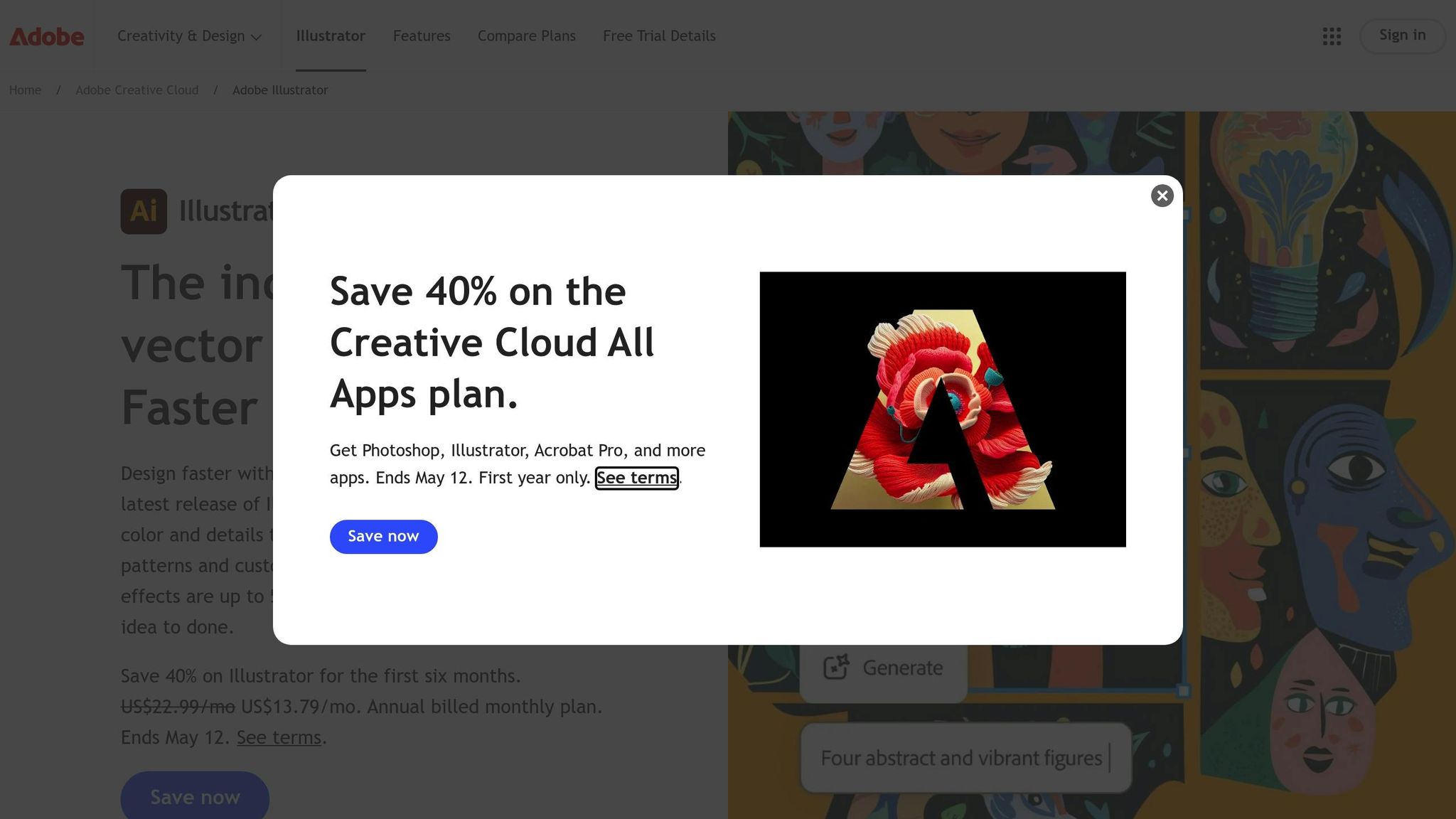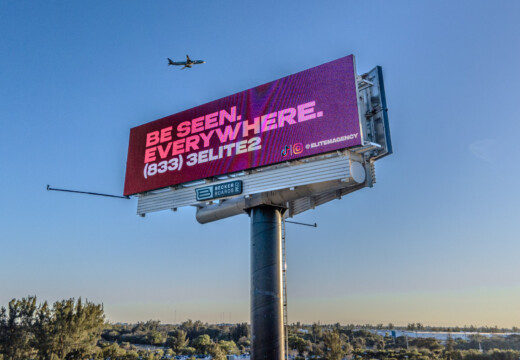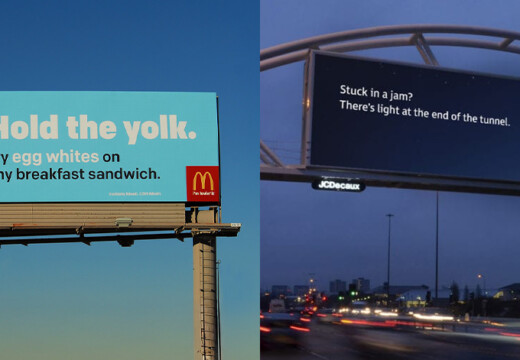Choosing the right billboard dimensions is crucial for creating effective outdoor ads. Here’s a quick guide to help you get started:
- Standard Sizes: Common formats include 14′ x 48′ (highways), 10′ x 30′ (city roads), 6′ x 12′ (urban areas), and more. Each size serves a specific purpose based on location and traffic type.
- Resolution Tips: Use appropriate pixel dimensions (e.g., 920 x 260 for 14′ x 48′) to ensure clarity and avoid blurry designs.
- Location Matters: Larger billboards work best for highways, while smaller ones suit urban or pedestrian-heavy areas.
- Budget Considerations: Bigger screens cost more, but platforms like Blip offer flexible pricing starting at $20/day.
Quick Tip: Match your billboard size to the viewing distance and traffic speed for maximum visibility. For example, highway ads need larger text and dimensions to be readable at high speeds.
BILLBOARD SIZES IN ILLUSTRATOR | HOW TO MEASURE BILLBOARD ILLUSTRATOR

Standard Billboard Screen Sizes
When it comes to creating effective digital outdoor advertising, understanding standard billboard screen sizes is key. The right dimensions and resolutions ensure your designs are both eye-catching and optimized for their intended audience and location.
Screen Sizes and Ratios
Different billboard formats serve specific purposes, and their dimensions reflect that. Here’s a quick guide:
| Billboard Type | Dimensions | Best Use Case |
|---|---|---|
| Bulletin | 14′ x 48′ | Highways and interstates |
| Poster | 10′ x 30′ | Main and secondary roads |
| Junior Poster | 6′ x 12′ | Local streets and urban areas |
| Square | 10′ x 10′ | Shopping centers |
| Vertical | 12′ x 21′ | Downtown and city locations |
Most digital billboards use a landscape orientation, commonly with a 16:9 aspect ratio. However, highway bulletins often require wider ratios like 3.5:1 or 4:1 to ensure visibility for vehicles moving at high speeds.
Screen Resolution Guide
Resolution plays a huge role in how clear and effective your billboard design will be. Standard digital billboards typically operate at 100 dpi, but the pixel dimensions depend on the screen’s physical size. Here are the recommended pixel dimensions for common formats:
- 14′ x 48′ Bulletin: 920 x 260 pixels
- 10′ x 30′ Poster: 1350 x 650 pixels
- 6′ x 12′ Junior Poster: 576 x 384 pixels
- Vertical Display: 264 x 480 pixels
Using the correct pixel dimensions ensures your design won’t appear stretched, cropped, or blurry. Larger billboards like the 14′ x 48′ bulletin require fewer pixels per foot because they’re viewed from farther away. On the other hand, urban displays need higher pixel density to maintain clarity for close-up viewers.
For mobile digital billboards, sizes vary depending on the vehicle. Smaller vehicles might feature screens as compact as 7′ x 8′, while larger trucks can accommodate displays up to 24′ wide. These mobile formats have unique resolution requirements tailored to their specific use cases.
Key Factors for Choosing Dimensions
Choosing the right billboard dimensions involves more than just following standard size recommendations. It requires careful consideration of specific factors like location, traffic patterns, and local regulations to ensure maximum visibility and impact.
Location and Distance
Where your billboard is placed plays a huge role in determining its size. For highways, larger billboards are a must to ensure they can be seen clearly at high speeds and from far away. For instance, a billboard along an interstate should measure at least 14 feet high by 48 feet wide to remain readable for drivers cruising at 65 mph or faster.
A good general rule for text visibility is to increase the text height by 1 inch for every 10 feet of viewing distance. Here’s a quick breakdown:
| Viewing Distance | Minimum Text Height |
|---|---|
| 100 feet | 10 inches |
| 200 feet | 20 inches |
| 300 feet | 30 inches |
| 400 feet | 40 inches |
Traffic and Viewer Types
The type of traffic – whether it’s fast-moving cars on a highway or pedestrians strolling through a city – also influences the ideal billboard size. Here’s how it breaks down:
| Traffic Type | Recommended Size | Viewing Time |
|---|---|---|
| Highway Traffic (65+ mph) | 14′ x 48′ | 5–7 seconds |
| City Roads (35 mph) | 10′ x 20′ | 10–15 seconds |
| Urban Areas (Walking) | 8′ x 16′ | 30+ seconds |
For highways, where drivers only have a few seconds to glance at your message, larger formats like 14′ x 48′ are essential. Conversely, in slower-paced downtown areas, smaller billboards – such as 8′ x 16′ – work well since pedestrians and slower traffic have more time to take in the content.
Local Size Rules
Local regulations also play a crucial role in determining billboard dimensions. These rules can vary widely and may include:
- Maximum height restrictions: Limits on how tall your billboard can be.
- Width limitations: Restrictions on the overall size.
- Setback requirements: How far the billboard must be from the road.
- Zoning restrictions: Rules based on the type of area (e.g., residential vs. commercial).
- Illumination guidelines: Limits on lighting and brightness levels.
Understanding and adhering to these regulations ensures your billboard not only fits the legal framework but also aligns with its surroundings for the best possible impact.
Design and Screen Size
When it comes to billboards, size plays a huge role in how well your message lands. A clear design, paired with an easy-to-read layout, ensures that your message can be quickly understood by people driving or walking by. The right dimensions and text size are key to grabbing attention and leaving a lasting impression. These elements naturally guide decisions about text size and layout, which we’ll dive into in the next sections.
Ray Bowens, Founder of Hashtag-Vape, highlights the power of billboard advertising, saying:
“Billboards are one of the most impactful ways to advertise, and with Blip, you spend a fraction of what you would end up paying elsewhere”.
sbb-itb-2e2e93f
Screen Size Costs
When planning your advertising budget, it’s essential to understand how billboard screen dimensions influence costs. Both screen size and location play a big role in pricing, so finding the right balance between visibility and affordability is key.
Price by Size
The size of a billboard screen significantly impacts advertising costs, with larger screens generally costing more. But it’s not always a straightforward equation – factors like the quality of the location and the amount of viewer traffic can also drive up prices.
One advantage of digital billboard advertising is its flexible pricing options. For instance, Blip’s pay-per-play model allows advertisers to display their ads on different screen sizes while staying in control of their budget. Campaigns can start at just $20 per day, making it an accessible option for businesses of all sizes.
Budget Planning
Once you understand how pricing works, you can create a smarter budget strategy to maximize your campaign’s reach. As Kimberly Pinkson notes:
“Blip works for us. It’s a different medium, and it brings a lot of exposure. It sets us apart”.
Here are some tips to align your budget with your campaign goals:
- Daily Spend: Experiment with different screen sizes and locations to see what works best.
- Flexible Scheduling: Adjust how often your ad is displayed based on performance metrics.
- Location Premium: Take into account the added costs of high-traffic, premium locations.
- Seasonal Variations: Prepare for higher costs during busy advertising seasons.
Modern digital billboard platforms make it easier to manage your spending. With features like real-time bidding and transparent pricing, you can fine-tune your budget across various screen sizes while ensuring your campaign stays effective.
Conclusion
Selecting the right dimensions for your billboard screen plays a big role in the success of your outdoor advertising. Striking the right balance between location, design clarity, and budget can make all the difference in how your campaign performs.
Digital billboard platforms make it easier to test different screen sizes without breaking the bank. By keeping factors like placement, design, and local regulations in mind, you can create ads that stand out while staying within your budget.
Ready to kick off your campaign? Check out Blip to access thousands of digital billboard locations across the U.S. With campaigns starting at just $20 per day and flexible scheduling options, you can find the perfect screen size to meet your advertising goals and budget. It’s all about creating maximum impact with the resources you have.
FAQs
How can I choose the right billboard size for my location and audience?
Selecting the perfect billboard size boils down to a few important considerations. Start with the location – is your billboard positioned along a busy highway where viewers will see it from afar, or in a bustling urban area where people might be closer? Bigger billboards are ideal for highways, while smaller ones are better suited for city streets or areas with close-up visibility.
Next, think about your audience. What will catch their eye and be easy for them to read as they move by? Simplicity and clarity are key here. Lastly, pay attention to your design – ensure your text size, images, and overall layout work well with the billboard’s dimensions to make your message pop.
Blip simplifies this process with tools that provide audience metrics like impressions, allowing you to make smart, data-backed choices for your campaign.
How can I balance my billboard advertising budget with screen size and location?
To make the most of your billboard advertising budget, hone in on three main elements: location, audience, and design. The location plays a huge role in how visible your ad is and how many people it reaches, while the design needs to align with the screen size to ensure your message stands out and is easy to understand.
Platforms like Blip make this process simpler by letting you choose billboard locations based on useful metrics like impressions and cost per thousand (CPM). This means you can allocate your budget more effectively and get better results. By aligning your campaign with your specific goals and budget, you can see real growth without breaking the bank.
How do local laws impact billboard sizes and placement?
The Role of Local Regulations in Billboard Dimensions
Local rules and regulations heavily influence how billboards are sized and positioned. Zoning laws, city ordinances, and state guidelines often dictate maximum sizes, height limits, and where billboards can be placed. These rules aim to balance safety with maintaining the visual appeal of the area.
Before settling on billboard dimensions, it’s crucial to research the specific rules for your chosen location. Urban, suburban, and rural areas often have distinct requirements that can directly impact the size and visibility of your advertisement. Knowing these details ahead of time ensures your campaign stays within the legal boundaries while remaining effective.
Related posts
- How to Choose Graphics for Digital Billboards
- How Screen Size Impacts Billboard Visibility
- How Screen Size Affects Billboard Ad Design
Selecting the perfect billboard size boils down to a few important considerations. Start with the location - is your billboard positioned along a busy highway where viewers will see it from afar, or in a bustling urban area where people might be closer? Bigger billboards are ideal for highways, while smaller ones are better suited for city streets or areas with close-up visibility.
Next, think about your audience. What will catch their eye and be easy for them to read as they move by? Simplicity and clarity are key here. Lastly, pay attention to your design - ensure your text size, images, and overall layout work well with the billboard's dimensions to make your message pop.
Blip simplifies this process with tools that provide audience metrics like impressions, allowing you to make smart, data-backed choices for your campaign.
"}},{"@type":"Question","name":"How can I balance my billboard advertising budget with screen size and location?","acceptedAnswer":{"@type":"Answer","text":"
To make the most of your billboard advertising budget, hone in on three main elements: location, audience, and design. The location plays a huge role in how visible your ad is and how many people it reaches, while the design needs to align with the screen size to ensure your message stands out and is easy to understand.
Platforms like Blip make this process simpler by letting you choose billboard locations based on useful metrics like impressions and cost per thousand (CPM). This means you can allocate your budget more effectively and get better results. By aligning your campaign with your specific goals and budget, you can see real growth without breaking the bank.
"}},{"@type":"Question","name":"How do local laws impact billboard sizes and placement?","acceptedAnswer":{"@type":"Answer","text":"
The Role of Local Regulations in Billboard Dimensions
Local rules and regulations heavily influence how billboards are sized and positioned. Zoning laws, city ordinances, and state guidelines often dictate maximum sizes, height limits, and where billboards can be placed. These rules aim to balance safety with maintaining the visual appeal of the area.
Before settling on billboard dimensions, it’s crucial to research the specific rules for your chosen location. Urban, suburban, and rural areas often have distinct requirements that can directly impact the size and visibility of your advertisement. Knowing these details ahead of time ensures your campaign stays within the legal boundaries while remaining effective.
"}}]}


